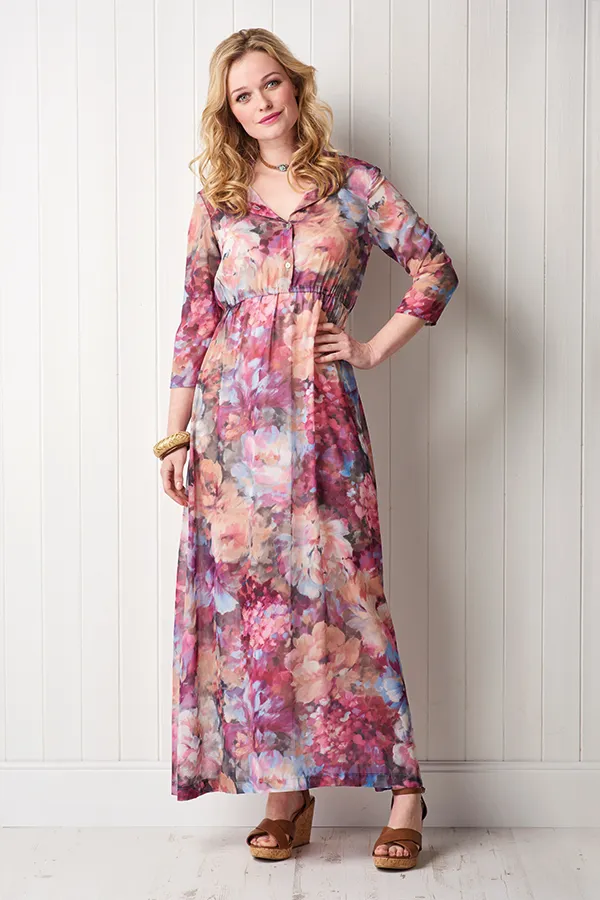In case you missed it, the Florence Dress is a two-part-pattern by Sew Over It which we featured in Simply Sewing magazine issue 30 and 31. Florence is best-suited to fluid fabrics with plenty of drape, so we asked the team at Sew Over It to share their tips for how to get better results from lighter fabrics. Scroll down on to read more...

In this article we share tips for sewing a maxi dress like the Florence Dress – this pattern is still available to buy from Sew Over It.
1. Cut your fabric on one layer
If you're setting out to sew a maxi dress like the Florence dress, you'll find fabrics like rayon, georgette and chiffon are perfect, but they can be tricky to cut out. Cutting out the fabric on one layer instead of on the fold can help ensure you are cutting on grain.
2. Secure your selvedges
When you're cutting lightweight fabrics, securing the selvedges to the table with masking tape can help keep it stable.
3. Mark the wrong side
Often with chiffon and georgette it can be tricky to tell the right sides and wrong sides apart. We like to mark the wrong side with a chalk cross to help us keep track of the pieces. We find this particularly useful for sleeves.
4. Choose the right needles & pins
For tightly woven lightweight fabrics such as chiffon, choose a brand new super fine microtex needle and silk pins so as not to snag the fabric.
Find your next sewing project:
5. Stabilise collars
With very sheer lightweight fabrics, stabilise the collar with organza instead of iron-on interfacing.
6. Tracing paper is your friend
To help stabilise the fabric as it goes through the machine, put a strip of tracing paper underneath the seam. This can be easily torn off once the seam is finished.
7. Shorten your stitch length
If you're finding your fabric is puckering when stitching around curves, try using a smaller stitch length. This will also slow down your stitching and make it easier to manoeuvre the fabric as you're sewing.
8. Start stitching small
If backstitching is causing your fabric to be pulled back into the feed dogs, start your line of stitching with a 1mm stitch length for the first 3cm or so, at which point return to a standard 2.5mm stitch length. At the end finish with another 3cm of short stitches. At each end tie the top thread and bobbin thread together.
9. Opt for French seams
If you don't have an overlocker, sewing french seams will give the insides of your dress a lovely neat finish.
10. Pick your buttons wisely
Choose lightweight buttons to match your lightweight fabric so that they don't pull the front of the dress.


